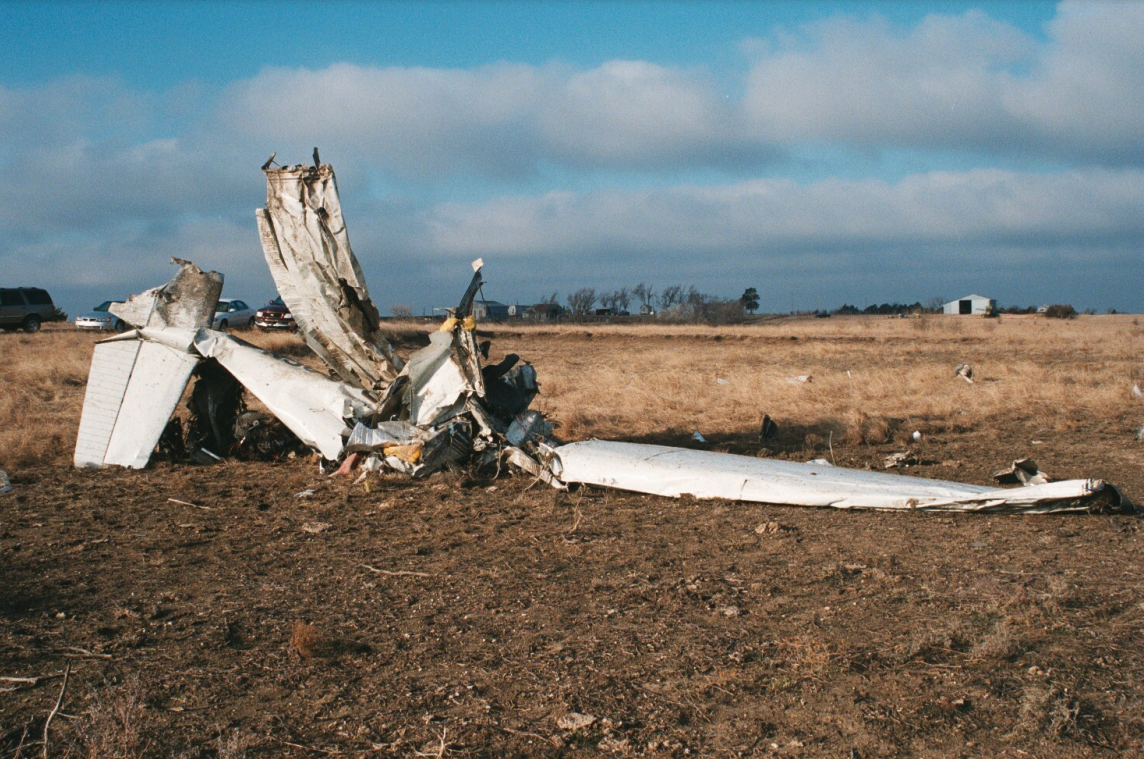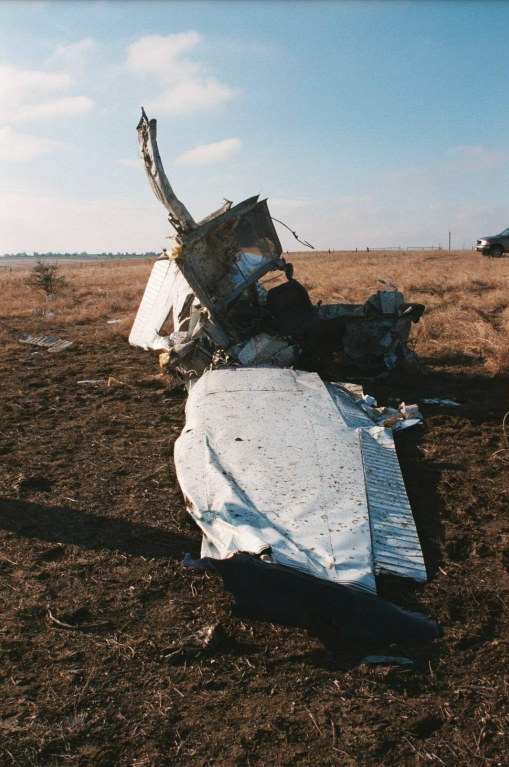
ASN Wikibase Occurrence # 45292
This information is added by users of ASN. Neither ASN nor the Flight Safety Foundation are responsible for the completeness or correctness of this information.
If you feel this information is incomplete or incorrect, you can submit corrected information.
| Date: | Friday 14 February 2003 |
| Time: | 19:55 |
| Type: |  Cessna 172N Skyhawk |
| Owner/operator: | Boeing Employees Flying Club |
| Registration: | N5898E |
| MSN: | 17271955 |
| Year of manufacture: | 1978 |
| Total airframe hrs: | 3865 hours |
| Engine model: | Lycoming O-320-H2AD |
| Fatalities: | Fatalities: 1 / Occupants: 1 |
| Aircraft damage: | Destroyed |
| Category: | Accident |
| Location: | Wellington, KS -
 United States of America United States of America
|
| Phase: | En route |
| Nature: | Private |
| Departure airport: | Oklahoma City-Wiley Post Airport, OK (PWA/KPWA) |
| Augusta Municipal Airport, KS (3AU) | |
| Investigating agency: | NTSB |
| Confidence Rating: |
On February 14, 2003, approximately 1955 central standard time, a Cessna 172N, N5898E, piloted by a private pilot, was destroyed during an in-flight impact with terrain near Wellington, Kansas. Instrument meteorological conditions prevailed in the area at the time of the accident. The flight was being conducted under 14 CFR Part 91 and was not on a flight plan. The pilot sustained fatal injuries. The flight departed the Wiley Post Airport (PWA), Oklahoma City, Oklahoma, approximately 1745, with an intended destination of Augusta Municipal Airport (3AU), Augusta, Kansas.
The pilot encountered instrument meteorological weather conditions during a visual flight rules (VFR) flight and subsequently lost control of the aircraft. Weather conditions in the vicinity of the accident site were reported as 800 feet above ground level (agl) overcast. The pilot obtained VFR flight following enroute. Approximately 43 miles from his intended destination, the pilot reported to the controller, "I'm going to have to drop down . . . I went into cloud cover here [at] three thousand five hundred feet." The controller then notified the pilot that weather conditions in the vicinity of the intended destination were below VFR weather minimums. The pilot elected to divert to an alternate airport 14 miles east of the aircraft's position. This decision was based on an automated report, current at the time but taken nearly an hour earlier, of clear skies. An automated report for the alternate airport, coincidentally taken at the time of the accident, reported 800 feet agl broken. A pilot conducting practice instrument approaches in the area at the time reported conditions as overcast with tops about 3,000 feet mean sea level (msl). He noted that it was clear above the clouds and somewhat hazy. He recalled that there was "not much of a horizon" visible. A motorist driving on the interstate reported seeing the aircraft three times. On the third occasion he stated the aircraft flew across the roadway, perpendicular to it, descending at approximately a 45 degree angle relative to the horizon. He reported the aircraft was traveling at a "high rate of speed". He recalled thinking the aircraft was approaching to land. The motorist recalled the weather conditions as very windy and gusty, with a low overcast. According to the motorist, the cloud bases were "rugged", but visibility below the clouds was good. The pilot obtained a preflight weather briefing approximately four hours prior to initiating the accident flight, however no record of an update briefing was found. The pilot was a non-instrument rated private pilot. He had logged 35.0 hours of night flight time and 3.6 hours of simulated instrument time. No actual instrument flight time was recorded in his logbook. His most recently logged flight was nearly four months earlier. A post-accident examination of the airframe and engine revealed no anomalies consistent with a pre-impact failure.
Probable Cause: Spatial disorientation experienced by the pilot and his subsequent failure to maintain control of the aircraft. Contributing factors were the pilot's failure to obtain an updated preflight weather briefing prior to the return flight, his attempted flight into known adverse weather, the lack of lighting (night) and the low ceilings.
Accident investigation:
 |
|
Sources:
NTSB: https://www.ntsb.gov/_layouts/ntsb.aviation/brief.aspx?ev_id=20030219X00239&key=1
Location
Images:




Photos: NTSB
Revision history:
| Date/time | Contributor | Updates |
|---|---|---|
| 28-Oct-2008 00:45 | ASN archive | Added |
| 21-Dec-2016 19:24 | ASN Update Bot | Updated [Time, Damage, Category, Investigating agency] |
| 08-Dec-2017 18:03 | ASN Update Bot | Updated [Source, Narrative] |
Corrections or additions? ... Edit this accident description
The Aviation Safety Network is an exclusive service provided by:


 ©2024 Flight Safety Foundation
©2024 Flight Safety Foundation